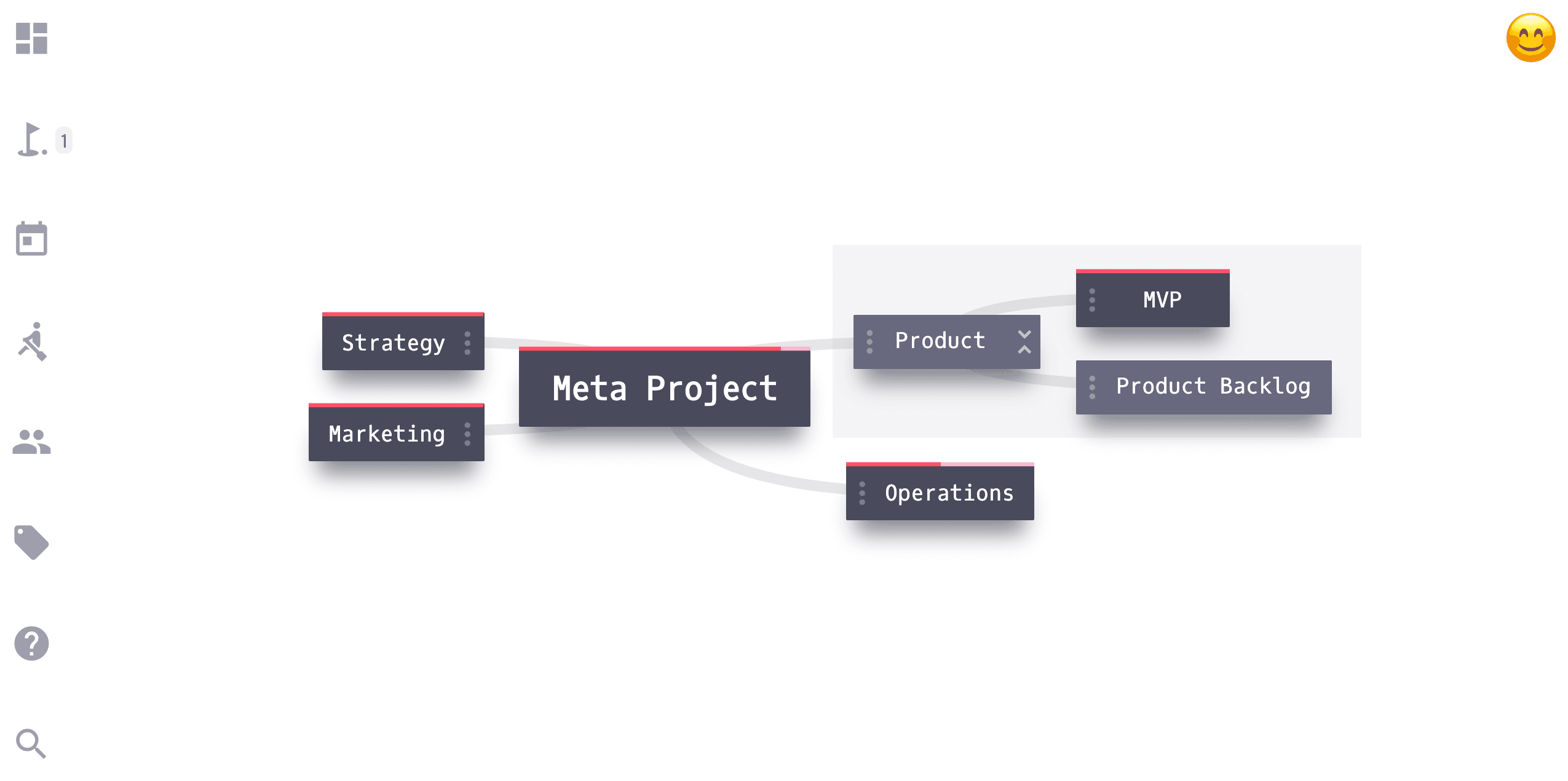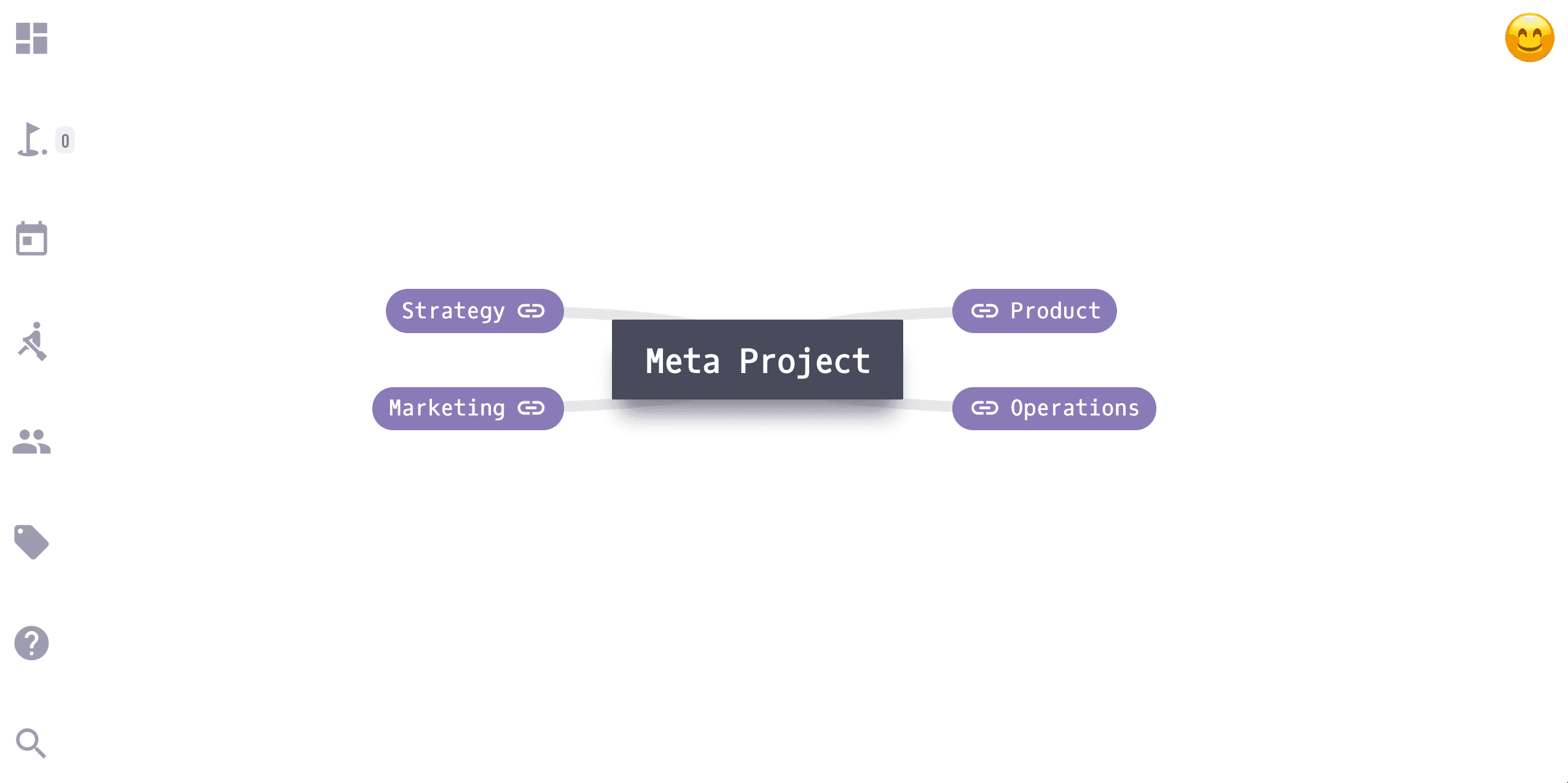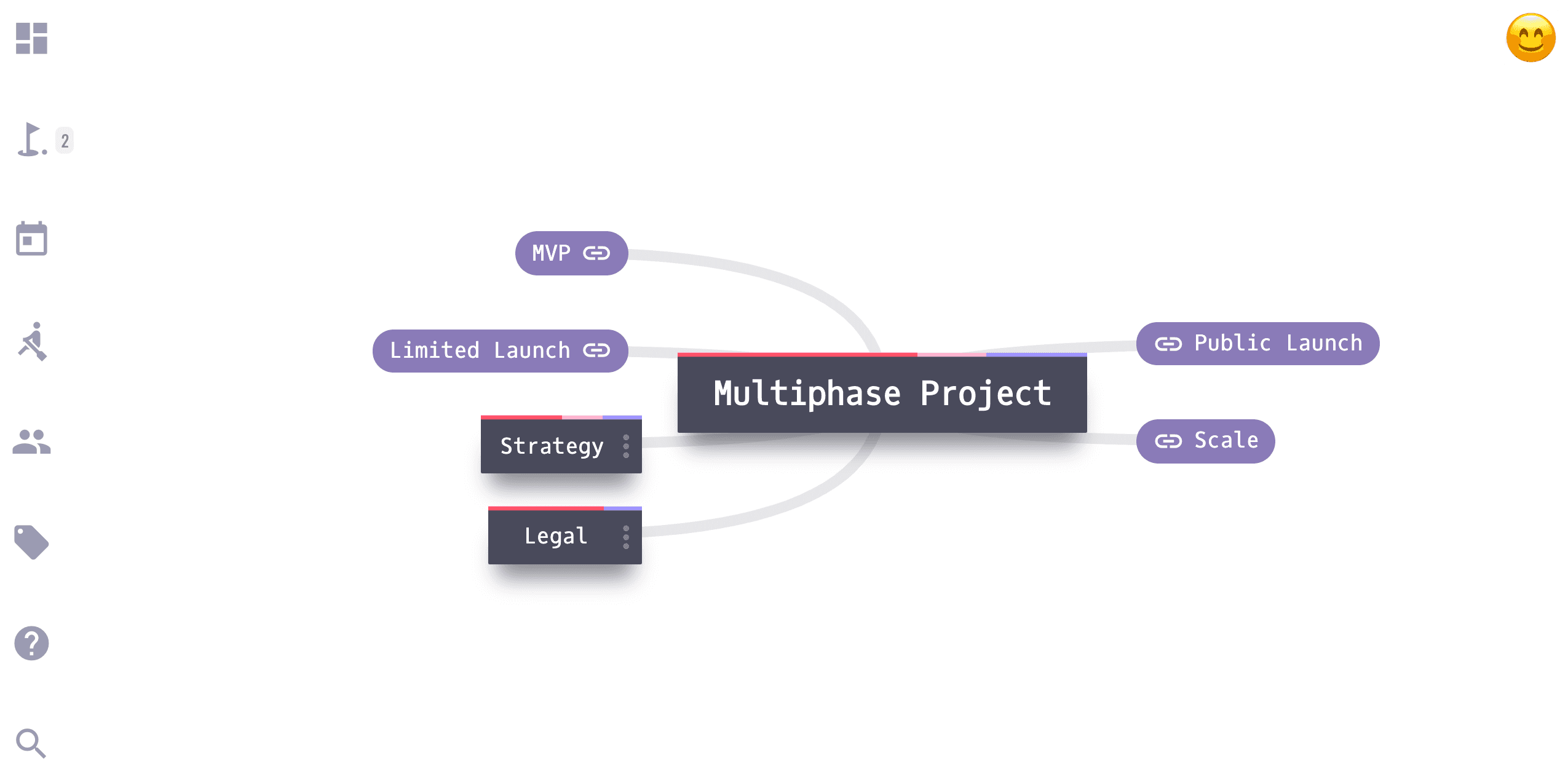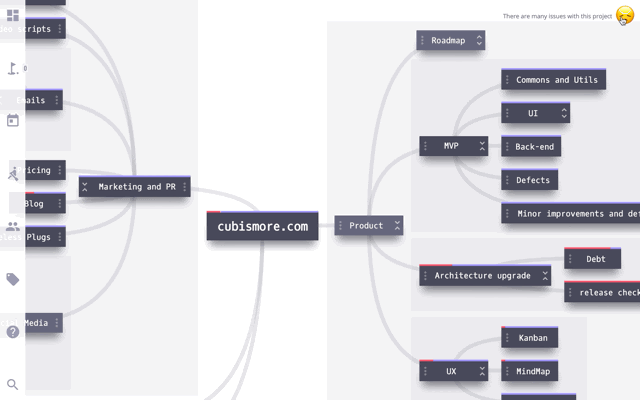
Project management may look like a straightforward process. You do project decomposition, divide and conquer, identify deliverables, write things down as tasks. You look forward, but it gets harder to see things as clearly as before. There is so much going on there. It's not unusual for projects to grow big and hard to manage. But why it seemed so clear and straightforward in the beginning and so murky and cluttered now? Among other things, like humans are bad at forecasting or Murphy's law hitting you hard, one thing often gets overlooked:
You don't realize that there is more than one project
It naturally happens when your company evolves. When it's not just you and your partner running the entire company — operations, marketing and engineering. Now you have dedicated operations team and a marketing lead taking care of those domains. They run their own workflows to stay focused. They don't want other teams to pollute their to-do lists and boards. Teams prefer to run their own projects, not share them with others.
What was a project before — is now a vision. A vision is a place in space and time where your product or service is successful and profitable. To get there, as a business owner, you need to achieve multiple goals. To help you with that, you hired people and built teams. Engineering — builds the product, marketing — lets the world know about your product, operations — run the company efficiently. So now you have a meta-project and you need to manage it, with all its artifacts, accordingly.
Managing meta-projects
As I wrote before in my blog post "What makes todo.space different": We wanted an instrument that would keep projects easy to organize and navigate — no matter how complex they could be. Consider the default project in todo.space. It's great to start this way when it's just you and a couple of people in the company. There is no issue here — everyone works on everything.

This is how you can implement it as a meta-project where different teams run Strategy, Marketing, Product and Operations.

Multiphase projects
Some projects are inherently meta-projects. For example, in SaaS world you can have MVP, Launch, Grow and Scale phases. Each of those phases has a definitive end goal, criteria of success and failure and distinct KPI to track. It's unnecessary to pull the historical baggage of the MVP phase when your focus is to deliver the product to a new market. Similarly, it is a little premature to think about scalability groups and rolling cluster updates when developing a proof of concept. Focus on what matters right now.

How to create smaller projects and link them together:

Now you may wonder what to do if you already have lots of boards with tasks that form a subproject in your meta-project? You would love to have them in a separate project but don't want to undertake a tedious chore of recreating all the boards and tasks in a new project?
— There is a button for that
See it for yourself. In this gif below, you can see how with just nine clicks, it was possible to split one enormous 4 years old project with 70+ boards and 600+ tasks into three smaller sub-projects and one umbrella meta-project

* Featured image is an installation "Notional Field" by Annica Cuppetelli and Cristobal Mendoza http://responsive-halifax.com/portfolio/cuppetelli-mendoza-2/